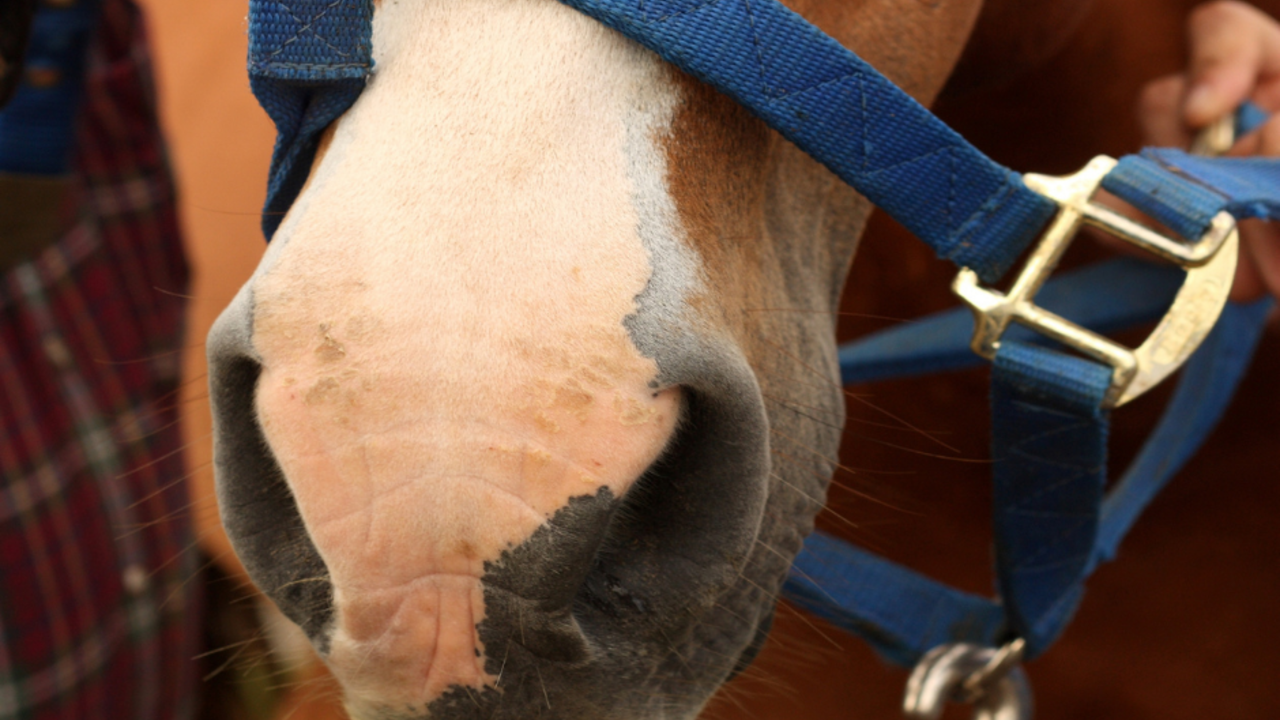How to Eliminate the Danger in Taking Off a Horse's Halter!

I see so many posts on Facebook that are misleading. One time I saw a video of an infant placed into a stall with a stallion and people commented on what a great babysitter he was. Nothing happened, but how many people think that they could trust stallions to take care of an infant after seeing this video?
My advice is to never take a horse for granted and stay on the lookout for anything that would create a dangerous situation for you or your horse. I remember one time, a stallion was in a cross-tie, and a groom brushed his hind leg. A mare was led past the stallion. To get the mare’s attention, he kicked out, squealed, and accidentally kicked the groom, sending her to the hospital. She was warned that a mare would be passing by, but she continued brushing the back leg of the horse because she trusted the stallion would not hurt her. Any horse can be dangerous in certain situations if we do not follow precautionary practices.
Here's the lesson…
It’s so important to take care of the handwriting on the wall before it’s too late. This is an easy lesson that will remove the possible danger of turning a horse loose in an open field.
Start this practice in a small paddock where you know the horse would not bolt away from you. Have hay on the ground and have eight small pieces of carrots in your pocket.
1. Put the lead rope around your horse’s neck and feed her a piece of carrot.
2. Remove the halter, still holding the lead rope around her neck, and immediately feed her a second piece of carrot.
3. Remove the lead rope, walk away. Let her go and eat the hay that is close by.
4. After giving your horse a moment or two to eat the hay, halter her again, walk her away.
5. Repeat this game three more times.
When you feel the horse is completely invested in this game of looking for the treat, and you have practiced this for ten days, you can then take this practice to where your horse would ordinarily tend to bolt out of a halter. If your horse is not looking for the carrot, like before, your horse may need more practice in the smaller paddock.
You should have a horse that will have given up the vice of bolting in a short time. I love this lesson because you are not getting in a fight with your horse to correct the problem.
If you can see that this lesson would work with your horse, try it out. It has worked for me with many kinds of horses. That is why I am sharing it with you.
In my school of horsemanship, The Resnick Method, I never fix a problem by addressing the issue at the moment the horse is displaying it.
This is important because if a horse experiences corrective training while she is upset, the horse will see you as the problem. This can then cause the horse to break out in more negative behaviors elsewhere.
I choose to correct unwanted behavior by training with an activity that deepens the connection, so this does not happen.
May the spirit of the bond be with you, and thank you for reading my blog!
Carolyn
